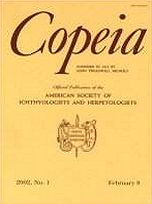Flicker electroretinography (ERG) was used to examine the in situ photopic (cone-photoreceptor based) spectral sensitivities of Green and Loggerhead Sea Turtles. Both species were responsive to wavelengths from 440–700 nm, and both had peak sensitivity in the long wavelength portion of the spectrum (∼580 nm). For Loggerhead Sea Turtles, no measurable responses were obtained below about 440 nm, whereas reliable signals were seen for Green Sea Turtles at wavelengths down to 400 nm. Both species exhibited significant declines in sensitivity below 500 nm. The overall shapes of the spectral sensitivity functions were similar for the two species. These results support previous findings that sea turtles have well-developed photopic visual systems. The characteristics of these spectral sensitivity functions indicate that both species possess multiple cone photopigment types, and these, in conjunction with the presence of colored oil droplets, strongly imply a capacity for color discrimination. Comparative evaluation suggests that these turtles have modified their visual pigments from those of their terrestrial relatives to better suit the ambient conditions present in the shallow water, submarine environments that they typically inhabit.
How to translate text using browser tools
1 December 2004
Photopic Spectral Sensitivity of Green and Loggerhead Sea Turtles
D. H. Levenson,
S. A. Eckert,
M. A. Crognale,
J. F. Deegan,
G. H. Jacobs
ACCESS THE FULL ARTICLE





